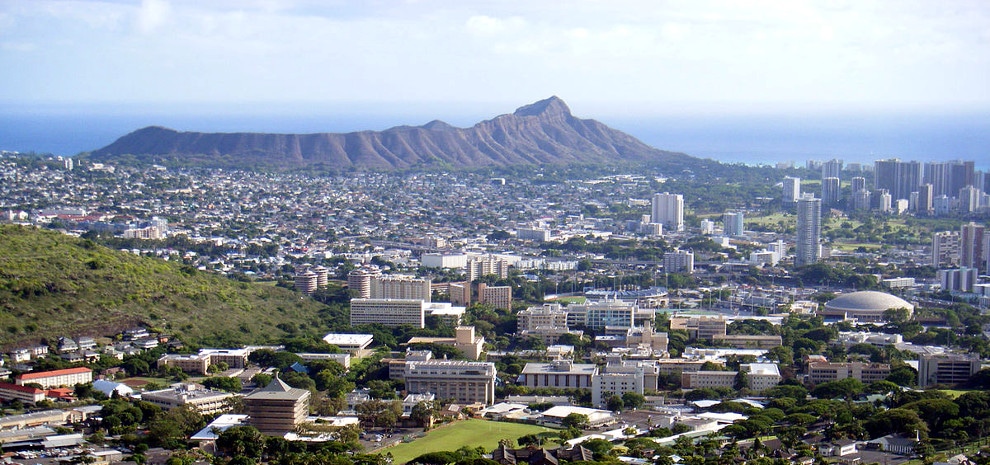The pace of solar installations in Hawaii has plummeted in recent years due to policy changes that ended net metering. The residential and commercial solar sectors are still hurting and installations are far too slow to reach the goal of 100 percent renewable energy for electricity generation by 2045, Hawaii’s official goal since 2015.
Hawaii is also lagging when it comes to battery storage.
“Smart imports” could be the solution Hawaii needs. Two new bills that would allow smart imports are pending this month in Hawaii’s 2020 legislative session.
(Full disclosure: I worked on both of these bills with State Senator Mike Gabbard and Representative Nicole Lowen.)
Lowen’s bill, HB1855, is moving along nicely, but could use more support from individuals and industry members. Gabbard’s bill, SB2749, is also moving but is not as far along.
Can policymakers help?
Solar combined with storage could, in theory, provide much of Hawaii’s energy needs (along with existing renewables like wind power and some small hydro and biomass plants). Storage is required because, of course, the sun only shines part of the day – even in Hawaii – and solar production doesn’t coincide with Hawaii’s peak power demand in the evening.
Energy storage is the obvious solution to this problem. If energy storage was cheap and plentiful, solar could provide all of Hawaii’s power needs with no fuel imports, cheaply, reliably and with minimal impact to the environment.
Sempra executive Patrick Lee stated in 2017 that transitioning to a fully renewable grid is now achievable: “If you were to ask me three years ago, as a power engineer, can we actually achieve a high percentage of renewables, my answer would probably be no, we’re going to need some base-load generation. But today my answer is, the technology has been resolved. How fast do you want to get to 100 percent? That can be done today.”
It’s now three years later and Hawaii is still woefully behind on battery storage.
Smart imports to the rescue
This is where policy can be helpful. Some states are already seeing too much daytime solar and Hawaii is at the front of this development because each island has its own power grid. Too much daytime solar is why net metering isn’t available anymore and the newer grid supply option has expired or is about to expire: Hawaii’s island grids can only handle so much daytime solar without running into problems with excess power.
But what if this excess power became a solution rather than a problem? Energy storage can become cheap when there is zero or very low cost for charging. Or, better yet, storage operators could be paid to use excess power from the grid. This is called “negative pricing” and is already a regular occurrence in some markets like California (too much solar power at certain times) and Texas (triggered by too much wind and natural gas at certain times)
Hawaii has no power sales market but policymakers could create the equivalent of markets by providing programs that allow large power users to earn revenue by absorbing/importing excess solar power – or at least to pay zero or very low costs for taking this excess power and making productive use of it.
Smart imports would be a “win/win/win” because it would allow far more solar on the grid and provide low or even zero-cost charging for stationary batteries and electric vehicles. This would give each of these three important green energy industries a big boost in Hawaii.
Large power consumers could, by absorbing either free/low-cost or even revenue-positive (negative priced) excess solar power during the day-time, use the absorbed power for night-time power demands. As long as there is enough day-time power consumption, there is no limit, in theory, to how much new grid-supply solar could be installed on homes and businesses.
The views and opinions expressed in this article are the author’s own, and do not necessarily reflect those held by pv magazine.
This content is protected by copyright and may not be reused. If you want to cooperate with us and would like to reuse some of our content, please contact: editors@pv-magazine.com.








Vehicle two grid would would provide virtually free storage. Time for an incentive to kick start this.
Hawaii is an interesting test case. The islands are just that and could be considered micro-grids within themselves. This will be the test of “how to run a micro-grid” with alternative energy. California can “mandate” all new construction have solar PV, it can “mandate” curtailing ICE transportation in favor of BEV. It can shut down its last baseload nuclear plant losing around 2GW of baseload generation. Hawaii is going to be the test case and show HOW one uses the technology properly to get the job done. Right now California is still trying to figure out how to run the grid. CAISO is still curtailing wind and solar PV during the peak generation part of the day and is using spot market fueled generation at premium prices to ramp around grid demands. A lousy practice and lousy business model.
Check the level of dependence upon solar power as we dump fuel based power in favor of “Green Solutions.” I’m not seeing much about what happens when the first Level 1 /2 (or worse) hurricane arrives. Many or even most of the solar panels in Hawaii are likely to end up in the Pacific Ocean or the neighbor’s kitchen. So – how reliable will that be for us?